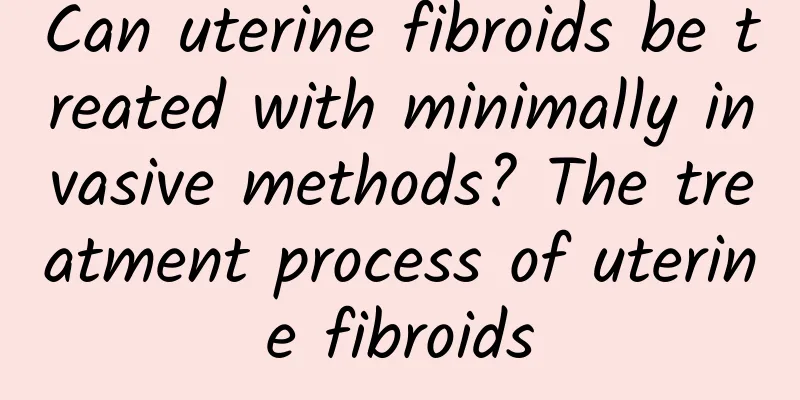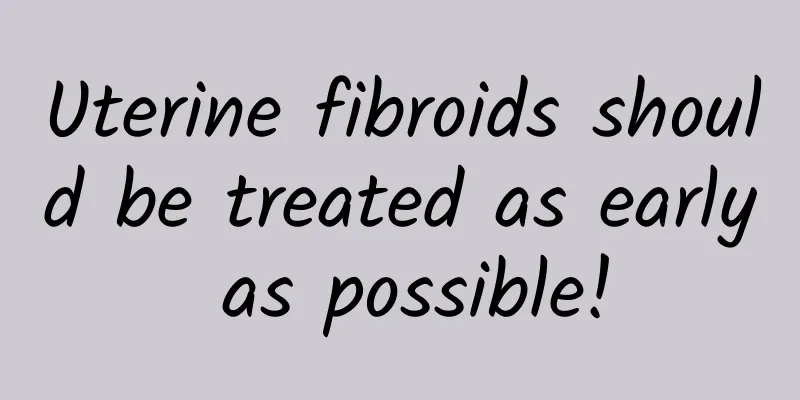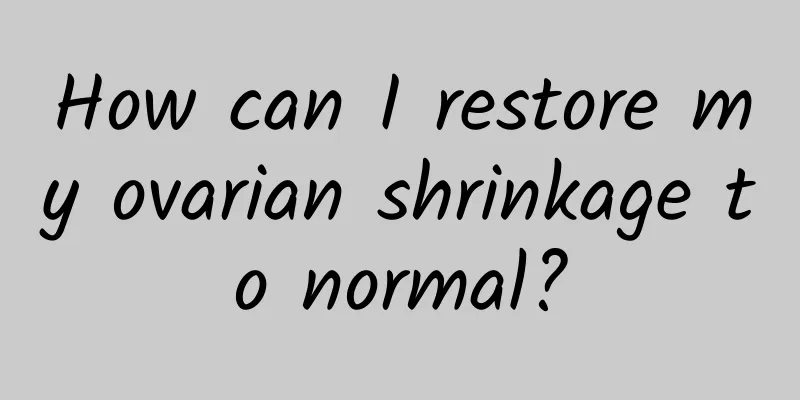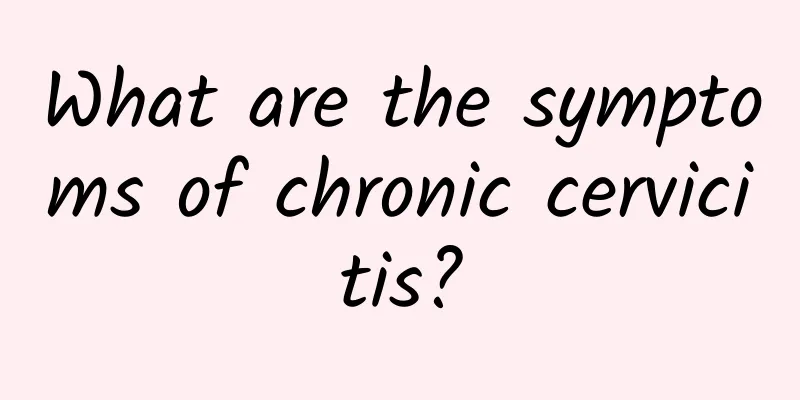Can uterine fibroids be treated with minimally invasive methods? The treatment process of uterine fibroids

|
Minimally invasive surgery is a common cancer treatment method that causes little harm to the human body, so the treatment effect is very good. So, what is the minimally invasive treatment process for uterine fibroids? Can you cure uterine fibroids? Most patients with uterine fibroids may not feel anything. However, if the fibroids are located low, even if the tumor is not large, it may compress nearby organs. For example, if it compresses the bladder, urination difficulties may occur; if it compresses the rectum, defecation difficulties may occur; if it compresses the ureter, back pain may occur. If surgery is required, minimally invasive treatment is recommended, which is safe and does not cause many surgical sequelae. Minimally invasive surgery for uterine fibroids is generally performed as soon as uterine fibroids are found. If the fibroids are 5CM, we can consider drug control and regular observation. If the symptoms are more than CM, we can consider combining drugs with physical therapy. If the uterine fibroids grow rapidly, timely treatment is required. In the past, uterine fibroids were mainly removed surgically, but young patients urgently need to maintain uterine function and improve their quality of life. Now, with minimally invasive technology for the treatment of uterine fibroids, patients can eliminate tumors and lesions and avoid the pain of hysterectomy, making the dream of doctors and patients for many years a reality. Compared with patients with uterine fibroids, women treated with uterine artery embolization have shorter hospitalization time, less trauma, faster recovery, fewer complications, better efficacy, and can preserve uterine function and normal fertility. The treatment does not affect other treatments. Minimally invasive surgery for uterine fibroids can cure uterine fibroids, but the pain is much better than other treatments. Minimally invasive surgery for uterine fibroids reduces the possibility of complications such as infection and adhesion. Due to less bleeding and less damage, the hospitalization time is shortened and the postoperative recovery is faster, which greatly reduces the physical and mental torture of pain on patients. |
>>: Treatment of uterine fibroids Is the high-risk group for uterine fibroids around 50 years old?
Recommend
Can women with cervical erosion eat donkey-hide gelatin? Dietary taboos for women with cervical erosion
Some women will have many gynecological diseases ...
Jeon Hyo-sung only eats one meal a day to say goodbye to her golden legs
When Jeon Hyo-sung, a member of the South Korean ...
Will there be bleeding after uterine fibroid surgery? What are the hazards of uterine fibroid surgery?
The incidence of submucosal fibroids is relativel...
What is uterine fibroids? How are uterine fibroids formed?
Uterine fibroid cells are located on the blood ve...
How to treat pelvic inflammatory disease
How is pelvic inflammatory disease treated? The f...
What should patients with uterine effusion pay attention to in their diet?
Uterine effusion disease is not unfamiliar to us....
What are the differential diagnoses for adnexitis?
Adnexitis is a female disease, and adnexitis is a...
What is the average age of menopause? What are the symptoms of menopause?
As a normal woman, you will generally experience ...
Painful urination Abnormal vaginal discharge
The stinging sensation during urination accompani...
"Obesity" is the root of all diseases! Stuck in weight loss? ! Traditional Chinese medicine helps you overcome difficulties!
"Obesity" is the root of all diseases. ...
Professional knowledge on causes of miscarriage
The causes of miscarriage are very complicated. S...
How to abort a pregnancy after 10 days? Let's find out.
If a woman wants to abort the baby after 10 days ...
A fat man ten years ago, now a handsome nutritionist! Can boiled meals, peppers and fruits help you lose weight? Analysis of NG Weight Loss Method
He runs a Youtube channel and has also shot print...
Can I eat carrots after a miscarriage? It is best not to eat them
Can you eat carrots after a miscarriage? Carrots ...
What is the malignant development of uterine fibroids? What are the characteristics of malignant uterine fibroids?
What is the malignant development of uterine fibr...









